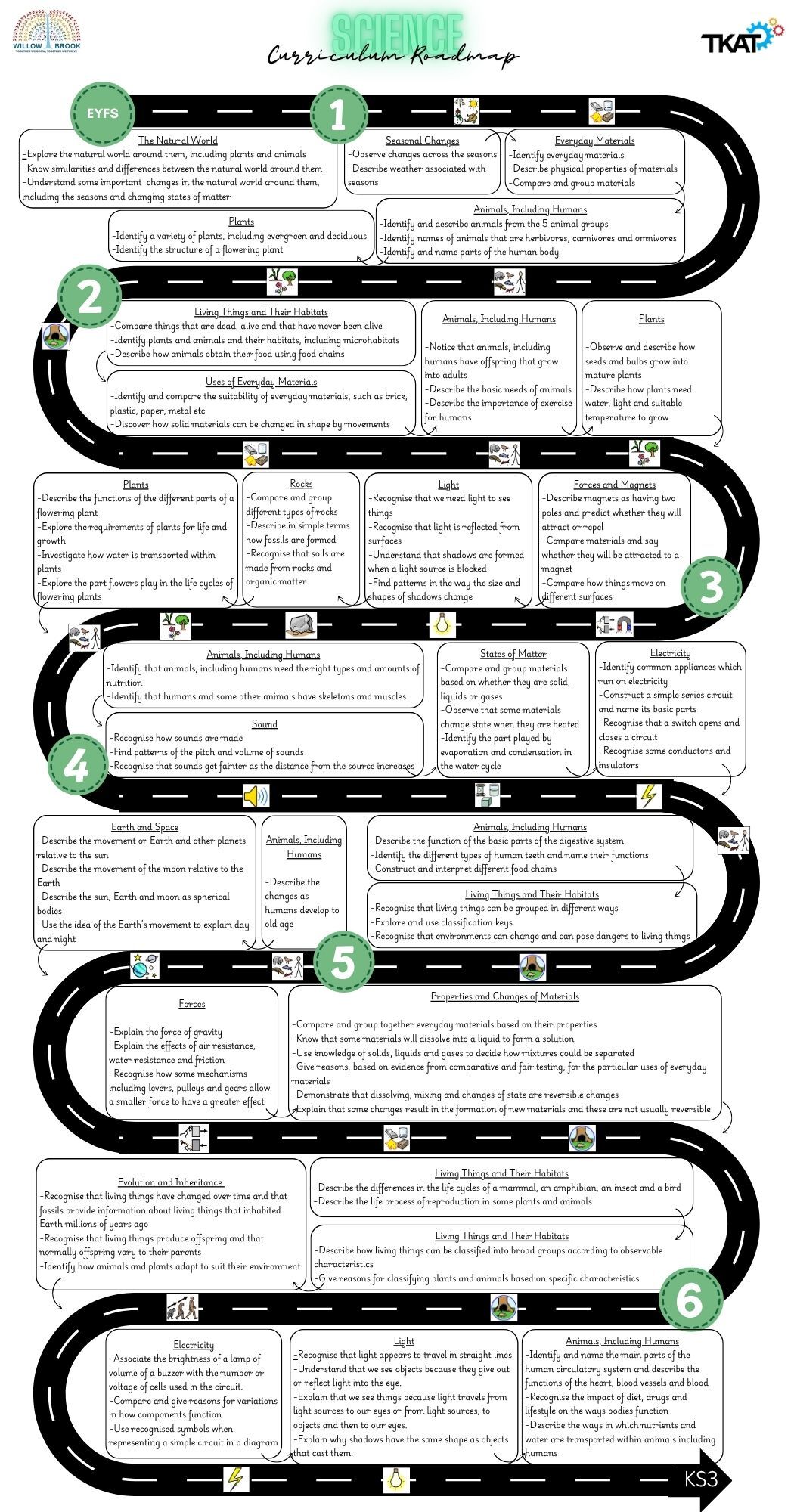Science
Science at Willow Brook
At Willow Brook, our Science curriculum is designed to spark curiosity, inspire discovery and develop a deep understanding of the world around us. Using the Kapow Primary scheme of work, our children explore key scientific ideas through engaging, hands-on investigations that nurture both knowledge and enquiry skills. Lessons are carefully sequenced in a spiral curriculum, allowing pupils to revisit and deepen their understanding of biology, chemistry and physics as they move through the school. From asking questions and testing ideas to analysing results and drawing conclusions, our pupils learn to think and work like scientists. Real-world examples and “Science in Action” units help them see how scientific understanding shapes our lives today and for the future. Through practical enquiry, discussion and collaboration, children at Willow Brook develop not only their scientific knowledge but also the confidence to communicate, question and explore the wonders of our natural and physical world.
